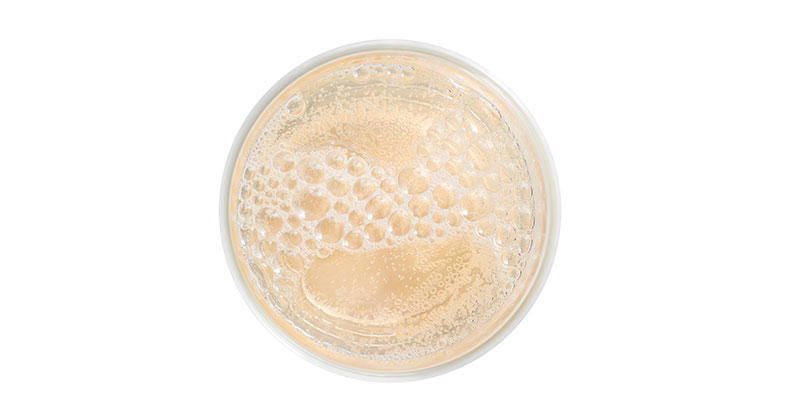You’ve probably tasted a cider with lots of fizzy bubbles, and you may have even had a completely still cider. However, carbonation variation is more than just a question of its presence or absence. There are a few bubble types that have to do with fermentation and legal limits. While there are still more ways to carbonate cider, here are five you’ll find in the market.
Still
It seems pretty straightforward to understand that something called a “still” cider is, indeed, not carbonated. And in most cases, this designation leads to a mouthfeel equivalent to a non-bubbly wine. A popular style in England, still ciders are long-standing classics that are mainly found near the cideries where they’re made.
Spanish sidra is also made and bottled still. However, in the presentation and serving of the cider, some effervescence is created. This is because sidra is traditionally poured from a decent height onto the sidewall of a special glass. The effect is an aerated liquid with a slightly creamy mouthfeel that lends levity to the traditionally tart sidra.
Méthode Champenoise
The most well-known method for fermenting carbonated ciders (and Champagne) in France, this route is also the most expensive way to add pressure to cider. After the juice goes through primary fermentation, more sugar and yeast is added to the liquid, and it’s bottled and stored.
Once the yeast dies off and is hanging out in the bottle, the cider continues to age on the lees (dead yeast) until the cidermaker starts the riddling and disgorging process. Bottles are tilted downward, toward the neck, allowing sediment to gather. The neck is then frozen, freezing the autolytic yeast into a plug. Once frozen, the cap is removed and the effervescent cider shoots out the dead yeast. After, a small amount of liquid is returned to the bottle to fill the empty space, then it’s capped and ready to go.
The pressure of liquid changing and fermenting creates gases, which are trapped within the bottle and infuse the liquid inside. Removing the cap from the bottle eliminates a small amount of pressure, but the character of the liquid inside the bottle is already rich with tiny bubbles, so it doesn’t go flat.
Force Carbonation
By far the most common way of carbonating cider in the United States and Canada, force carbonation is what you have to thank for the bubbles in everything from LaCroix to Coca-Cola, macro ciders to many small-batch craft sips. The bubbles in force-carbonated beverages are created with special machines, such as brite tanks equipped with carbonation stones.
The capabilities of machines differ in terms of how much pressure they can create. So the level of carbonation — and not just whether to carbonate the liquid or not — is also a consideration of the process. However, force carbonation occurs most often on what is essentially an already finished product. So, the act of creating effervescence is an add-on, rather than a part of the inherent characteristics of the liquid. The result is larger bubbles than you’ll find in ciders carbonated through other means. Additionally, those bubbles disappear fairly quickly, encouraging enthusiastically fast drinking before the cider goes flat.
Charmat or Tank Method
Similar to méthode champenoise, the tank or “Charmat” method is a less expensive, though also effective, way of creating effervescence in cider. After primary fermentation, the cider is allowed to go through secondary fermentation in a large tank, rather than in individual bottles. The sediment falls to the bottom of the tank, and the liquid inside can be bottled without the need for riddling and disgorging.
Pétillant-Naturel
Fizzy but without the concentration of CO2 you find in ciders made with méthode champenoise, pétillant-naturel (or, pét-nat, as they’re often called) ciders are also produced in North America. The ciders are traditionally allowed to ferment in the bottle and are topped with a crown cap, rather than a cork and cage. This is because they keep the sediment created during the fermentation process and are thus often a bit cloudy.
This piece originally ran in print Vol. 9 of CIDERCRAFT magazine. For the full story and more like it, click here.






